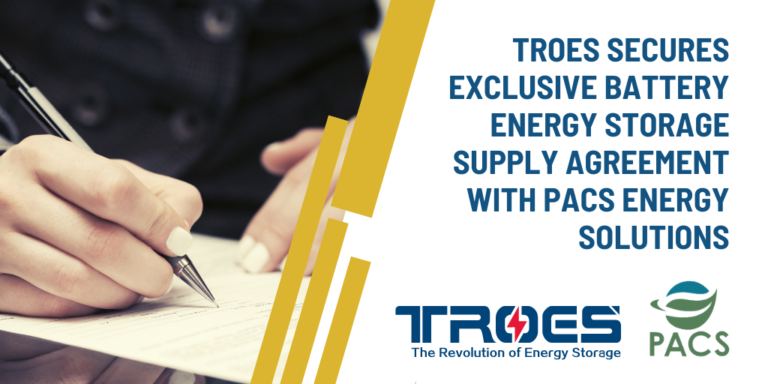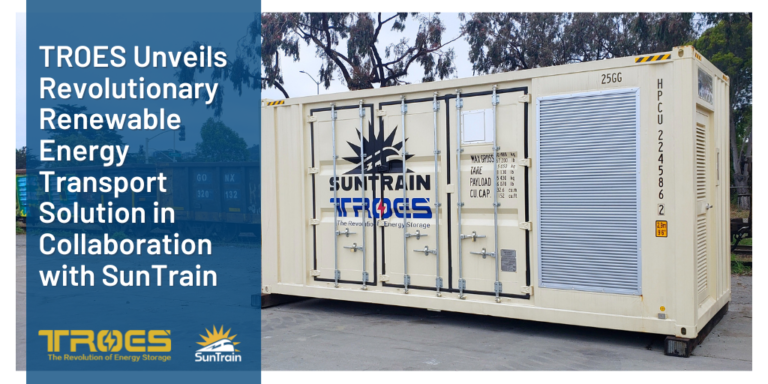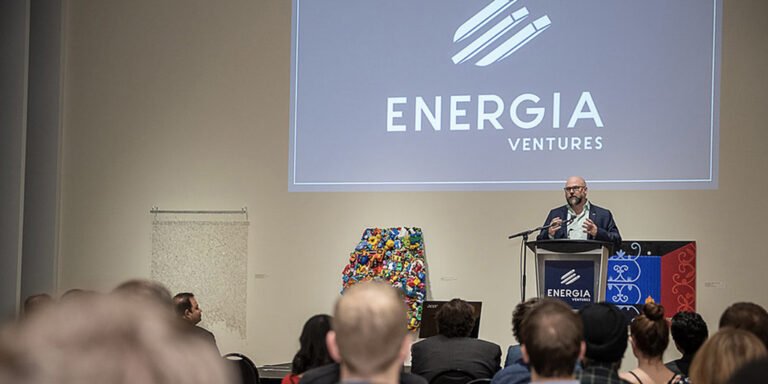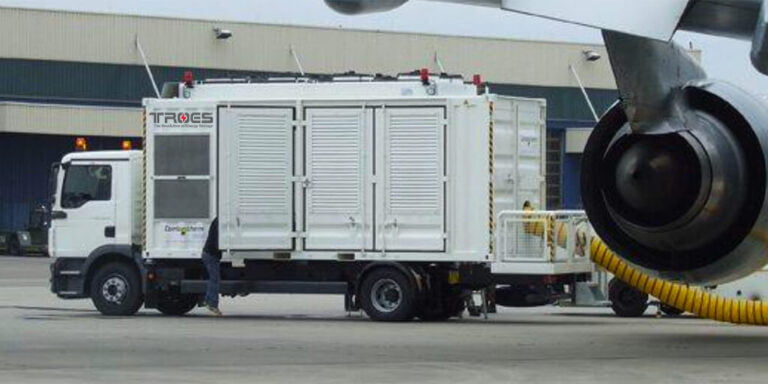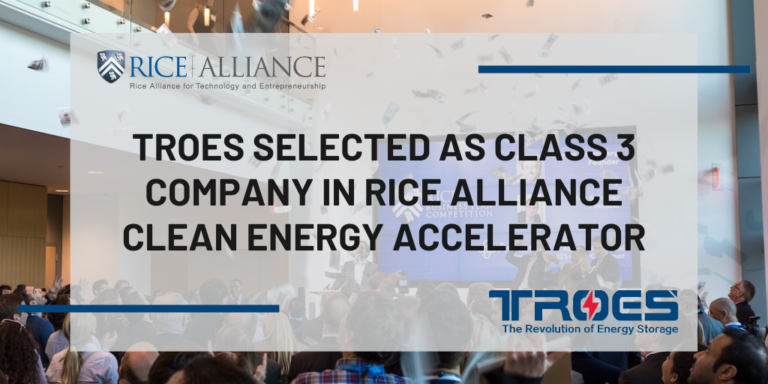Interview with Vienna Zhou, CEO of TROES Corp.
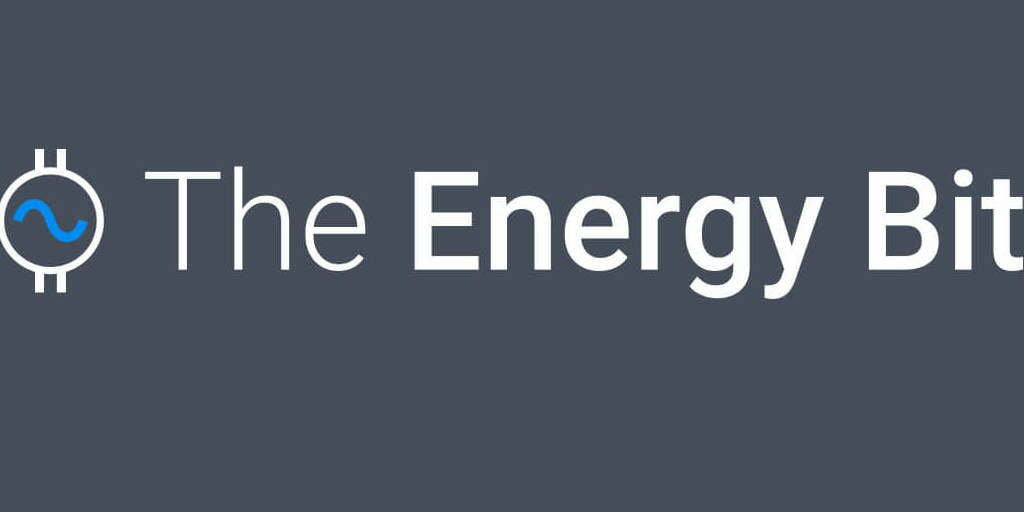
Can you explain where the idea came from and how TROES has traveled since its inception?
TROES was founded by myself (Vienna Zhou) under the umbrella theV Technology Inc, (theVTech) which is our technology and investment consulting firm specializing in the Cleantech and Renewable Energy industry. TheVTech has a wide scope of clients, including renewable project developers, project investors, end-users such as government offices, etc. It has accumulated rich technology insights as well as ecosystem resources during its years of operation. After a comprehensive study of industry trends, technology developments, and market needs, the timing was right and theVTech entered the Energy Storage industry through the creation of TROES.
Our fast growth shows that we made the right decision. TROES’ technology, products, and marketing positioning have received an excellent response from the market. We were so well received that we have had sales since month three of our existence.
Can you explain where the idea came from and how TROES has traveled since its inception?
TROES was encouraged to apply for Accelerator Center technology funding, and we were fortunate to be one of the awardees. TROES is in the process of raising additional capital to support our fast growth and continuous R&D. Our current shareholders have been very supportive, but we would like to broaden their base by adding capital from investors who have a keen interest in helping the company succeed.
Is the company only operating in Canada currently, and what is the plan for future expansion?
TROES currently operates in Canada; corporate headquarters are located in Markham, Ontario. Our client base extends beyond Canada, including clients from the UK. TROES is scaling up very quickly. Our opportunity pipeline is more than $50 million in value and includes project requests from the USA, Australia, and several European countries.
Our near-term focus will continue to be on the North American market, and we will expand to the global market step by step. We plan to increase our sales and marketing presence in North America and may open some remote sales offices.
Can you give a brief overview of how large Troes is and what is its capacity for battery creation and installation? Where are the Batteries produced?
TROES is an early-stage company with high growth potential. Our team is currently eight people, all highly skilled. We are complemented via the depth of skills and capacity by our contract manufacturers and suppliers, who work closely with us on each order. With our current supply chain, we can deliver up to 150MWh of storage capacity per year.
Our production model is to be asset-light with TROES doing engineering, design, sales, marketing, installation, and maintenance. Our components are made to our specifications by contract manufacturers, most of whom are in China. We also source components from Canada and the USA. Our final assembly is usually done at the customer site.
How do you see the energy storage market outlook? How big of an increase does the grid need?
The indisputable need for more electricity worldwide, the need for investment in electricity generation along with networks for transmission and distribution, the rise of renewables and the global trends for Cleaner Energy as well as relevant government policies and incentives are some of the catalysts to the Energy Storage market growth.
Energy Storage Solutions are vital in enabling the Distributed Energy future, with local generation from renewable sources becoming the dominant supply source for communities. Demand for storage will remain strong for the next 5-10 years, at minimum.
According to Bloomberg NEF, the global additions to the BESS capacity (battery energy storage systems) from 2018 to 2050 will be 1,291GW, which is just part of the future electricity needs.
You seem to have chosen Li-Ion battery technology – while this seems to be the mature market leader, do you see other technologies gaining ground, and which ones do you think might be competitors in the future?
TROES is the acronym of “the Revolution Of Energy Storage,” so we expect that our technology and market development to be the testimony of the technology revolution of Energy Storage. We chose Li-Ion battery technology to be our first generation of technology for the following reasons: the strong price decreases of Lithium-Ion batteries in the past 5 years, the large amount of investment being made in production capacity for Li-ion, the acceptance by customers of Li-ion battery systems, and the increasing performance of the batteries themselves,
While Li-ion is our technology of choice for now, we keep a close eye on the technology development trends both within the Lithium-ion category as well as other categories like thermal, electromechanical, and hydro. We see flow batteries and perhaps ultracapacitors as candidates for “the next big thing.” We don’t see them so much as competitors to our company; our R&D plan is to add new storage types to our technology base as they reach maturity and are commercially ready.
Who are your competitors? Is there much room for growth in the market?
We view our competition matrix as being three-dimensional. First, on the technology front, there are various flavors of Li-ion, including Nickel-Manganese-Cobalt (NMC), Lithium-Iron-Phosphate (LIF), and Lithium Titanate (LTO). The Electric Vehicle market has driven the supply chain for NMC and has carried over into the stationary energy storage market. But NMC has proven to be prone to fires, and thus the stationary market is moving to LIF batteries, which are far safer.
In the second dimension, our competitors in regards to production and scale are big brands like LG, Samsung, Panasonic, and Tesla. They are often willing to discount their stationary products to improve plant efficiency for the EV products. In addition to these OEMs, we compete with system integrators who resell systems from the more significant players.
Third, we compete with substitute technologies and products such as pumped hydro, compressed air, hydrogen, biofuels, and geothermal. Given the exceptional growth forecast for energy storage demand, there may be room in the market for many of these technologies to exist simultaneously.
How do you see battery storage being integrated into the market – in particular with regards to EV’s, Microgrids, and large-scale energy storage?
EVs charging can change the shape of the demand curve for a business, building, or community. This can lead to increased charges for peak usage if not curtailed. Energy Storage Systems can capture energy during non-peak hours and supply the additional demand by the EVs during peak hours, thus reducing electricity costs.
Microgrids based on renewable resources require energy storage to offset the variable nature of the generation and provide a consistent amount of power to the customer base.
Large-scale energy storage for grid operators can help integrate renewable sources into the grid generation profile, especially for peak power supply. It can also provide stability for the grid by being a medium-duration (1-4 hours) backup. Finally, it can provide capacity firming by supplying peak loads in distributed loads where transmission and distribution infrastructure is not able to meet those needs.
What’s your take on AI and machine learning? How is it going to affect the future of energy creation and trading?
AI and machine learning are definitely a part of the future of Energy Storage. These tools will operate in several ways: optimization of assets for generation, optimization of system components in operation, and as planning tools for generation by using inputs such as weather. One of the most significant changes will be the creation of Virtual Power Plants, whereby clusters of Energy Storage Systems will share their resources to meet the needs of a community.
Original interview posted on The Energy Bit. We thank you for taking the time to interview us.

